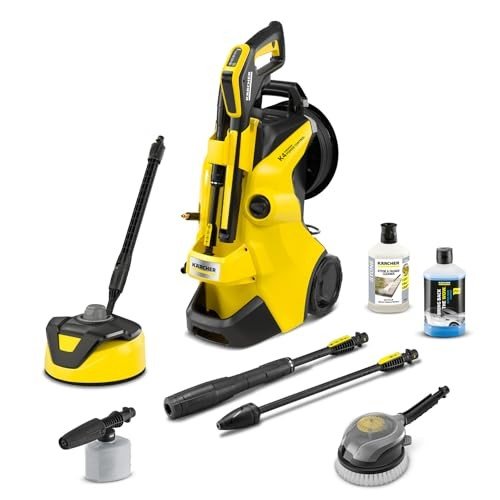The Comprehensive Guide to Power Tools: Understanding Their Types, Uses, and Maintenance
Power tools are essential in the contemporary workshop, enabling tasks that would otherwise be tiresome and lengthy when performed with hand tools. Varying from basic drills to intricate woodworking devices, power tools provide effectiveness and accuracy that can dramatically alter the way experts and hobbyists approach their projects. This article checks out the various types of power tools, their applications, upkeep suggestions, and often asked concerns.
Types of Power Tools
Power tools are usually classified into 2 main groups: cordless and corded. Each type has its advantages and perfect usages.
1. Cordless Power Tools
Cordless tools operate on rechargeable batteries, supplying greater movement and ease of use. Some common types consist of:
- Cordless Drill/Driver: Essential for drilling holes and driving screws, a cordless drill is an essential in any tool kit.
- Cordless Circular Saw: Ideal for cutting lumber and other materials, especially when mobility is required.
- Cordless Jigsaw: Useful for making intricate cuts and curves in various materials.
- Cordless Impact Driver: Perfect for driving long screws and fasteners into difficult materials rapidly.
2. Corded Power Tools
While corded tools may be less portable, they usually offer more power and are frequently used for heavier-duty tasks. Key examples include:
- Table Saw: A stationary tool that offers accuracy cutting for woodworking jobs.
- Miter Saw: Used for making precise crosscuts and miters in a workpiece.
- Angle Grinder: Useful for cutting or grinding metal and concrete.
- Drill Press: A fixed drill that allows for achieving greater accuracy in drilling holes.
Comparison Table of Cordless and Corded Power Tools
| Function | Cordless Power Tools | Corded Power Tools |
|---|---|---|
| Mobility | High | Restricted by power cord |
| Power | Less powerful | More powerful |
| Weight | Lighter due to absence of cord | Much heavier due to motor and cable |
| Battery Life | Minimal by battery life | Continuous power supply |
| Expense | Usually more costly | Usually more affordable |
Applications of Power Tools
Power tools are utilized throughout numerous markets and activities. Comprehending the best tool for the job can enhance efficiency and results. Some common applications include:
- Construction Projects: Drills, saws, and nailers dominate task websites for framing and roofing.
- Woodworking: Routers, sanders, and jointers assist in developing complex and polished wood pieces.
- Automotive Repair: Impact wrenches and air compressors are crucial for dealing with vehicles.
- Home Improvement: DIY enthusiasts make use of various tools for restorations, repairs, and landscaping tasks.
Popular Power Tools and Their Uses
Here are some often used power tools along with their primary applications:
Power Drill:
- Used for drilling holes and attaching screws.
- Is available in various sizes for various applications.
Reciprocating Saw:
- Ideal for demolition work and cutting through products like wood, metal, and drywall.
Sander:
- Used for smoothing surfaces, available in different types such as orbital and belt sanders.
Router:
- Employed in woodworking for hollowing out a location in a piece of wood.
Nail Gun:
- A quick and effective tool for driving nails into wood and other products.
Maintenance Tips for Power Tools
Keeping power tools in optimal condition is vital for security and performance. Here are some upkeep suggestions:
- Regular Cleaning: Dust and particles can accumulate in power tools. Regular cleaning helps maintain performance and extends tool life.
- Check Connections and Cords: Regularly inspect for fraying or damage to cords and connections. Change any broken parts immediately to avoid accidents.
- Hone Blades and Bits: Dull blades can decrease performance and precision. simply click the next internet site makes sure clean cuts and faster operation.
- Lubrication: Certain tools need routine lubrication. Consult the user handbook for specific suggestions.
- Storage: Store tools in a dry environment and in their cases if available. This secures them from moisture and accidental damage.
Regularly Asked Questions (FAQs)
1. What safety equipment should be used when utilizing power tools?
- It is vital to use appropriate safety equipment such as safety glasses, hearing defense, gloves, and a dust mask depending upon the tool in usage.
2. How do I choose the right power tool for a project?
- Consider the particular jobs you need to accomplish, the product you'll be working with, and the tool's power capability. Researching tools fit for those jobs will assist in making the best choice.
3. Are cordless tools as great as corded tools?
- Cordless tools offer benefit and mobility, while corded tools supply more power for heavier jobs. Select based on your particular needs.
4. How frequently should power tools be preserved?
- Routine upkeep ought to be performed regularly, ideally after every usage. Comprehensive examinations and servicing must be done at least when a year.
5. What is the life-span of a typical power tool?
- The life expectancy of power tools varies widely depending on use and quality however typically ranges from 5 to 15 years.
Power tools are important properties for both professionals and DIY lovers, using efficiency and precision unlike any hand tool. Comprehending the various types, applications, and upkeep treatments is important for optimizing their possible and making sure safety. With appropriate care and knowledge, these tools can serve users successfully for several years, ultimately enhancing productivity and task results. By buying quality tools and adhering to upkeep rituals, one can make the most out of every job, regardless of size or intricacy.

